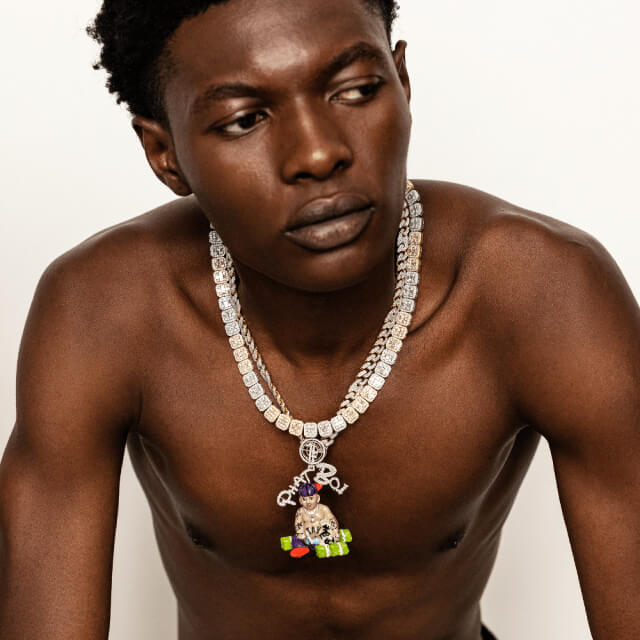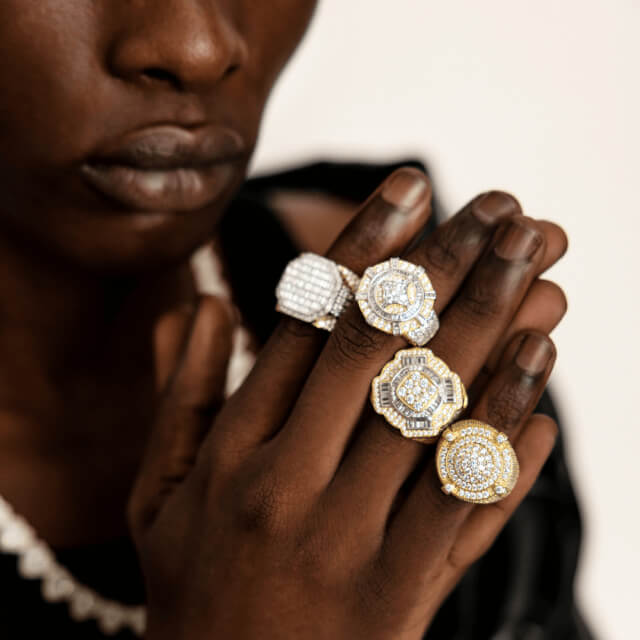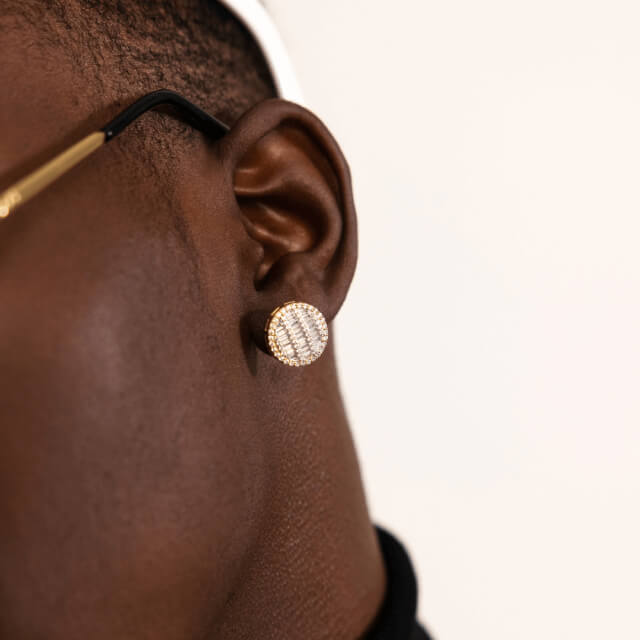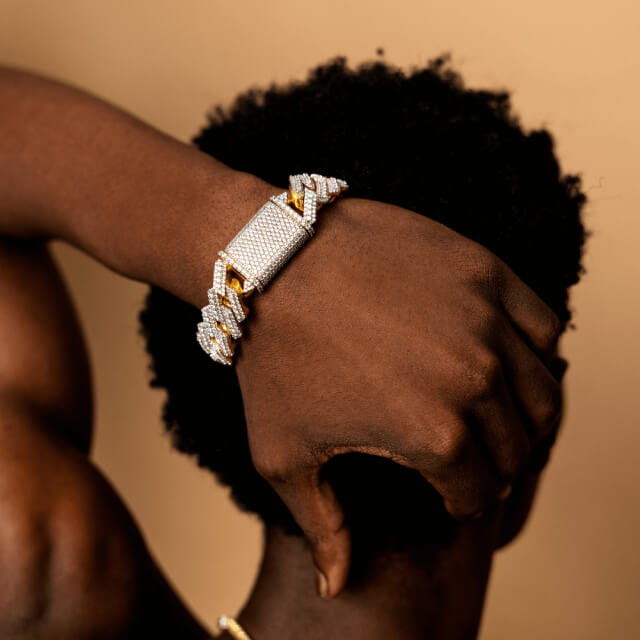Discover 4 C's of Diamonds: Guide to Choose the Perfect Stone
Diamonds can be luxuries as well as fads that satisfy for a prolonged time. And these can be love at first sight! But the process of buying diamonds is not as easy as loving them! Many factors come into play. Today, we’ll discuss one such factor; the 4Cs of diamond.
Introduction to the 4 C’s of Diamonds
The "Four C's" of diamonds are carat weight, cut, clarity, and color.
These are the characteristics by which diamonds are judged and graded on the overall quality scale. The measurement used to determine a diamond's size is its carat weight. Height, depth, angles, and other elements all have a role in the diamond's cut, which refers to how beautifully it has been shaped.
The better the quality in each category, the more valuable and rarer the diamond becomes, which effectively decides its price.
Therefore, It's important to understand these characteristics when shopping for diamonds so that you can find the best value for your money.
Let’s Discuss each “C” in detail so you can make a better-positioned decision next time you buy your favorite diamond!
C- Carat
Carat weight is the easiest of the 4 C’s of diamond to understand – it’s simply how much a diamond weighs.
The term is derived from the carob seed, as early jewelers used these seeds to balance scales when weighing diamonds. Carat weight is measured in metric carats. One carat is equal to 200 milligrams.
While a one-carat diamond is considered 0.2g, that doesn’t mean it’s small in size. A one-carat round diamond will look noticeably larger than a one-carat marquise, for example, because the marquise has a narrower diameter another example is 5 carat diamond which also have many factors in place. That’s why carat weight is just one factor to consider when selecting a diamond.
Gemologists also measure diamonds in points. One carat equals 100 points. So a diamond that is .50ct would be described as 50 points or half a carat.
C-Cut
When a diamond is cut, it is referring to the angles and proportions that have been applied to the stone. It is these factors that determine how light will interact with the diamond and, ultimately, how sparkly and brilliant the diamond will appear.
Further, as this is also influenced by which shape the diamond needs to be carved in, different cuts have different iridescence, shine, and charisma. This is why shoppers often consider the precise cut of a diamond before buying!
C-Clarity
When it comes to diamonds, clarity is everything!
A diamond's clarity is a measure of how free from blemishes and inclusions it is. As better the clarity, the better will be the brilliance, the value of the diamond increases with clarity. But how to measure if a diamond has great clarity or not?
There are six grades of diamond clarity: flawless, internally flawless, very slightly included, slightly included, included, and heavily included. Out of these, flawless and internally flawless diamonds are the rarest and most valuable. It also depends on the region from where diamonds are brought. Diamonds that are included or heavily included are less valuable because their blemishes and inclusions reduce their overall clarity.
Therefore, next time, when shopping for a diamond, be sure to ask about its clarity grade. This will help you determine how valuable the diamond is and how much you should expect to pay for it!
C- Color
Color is the last C of diamonds we need to discuss. It is the most important factor in determining a diamond's value. The color scale for diamonds starts at D (no hue) and goes down to Z (a yellow-hued diamond). A diamond is more precious the less color it has. It is said that a diamond's value can drop by as much as 30% if it is graded on the lower end of the color scale.
The GIA (Gemological Institute of America) has a standard color scale that grades diamonds and is used as the industry benchmark. This color scale starts at D and goes all the way down to Z. GIA scale is used by jewelers around the world to evaluate a diamond's value.
Once you know what the 4C’s of diamonds are, the next step is to comprehend how important these are for ensuring a diamond’s grace!
How Do the Four C’s Affect a Diamond's Value?
The 4 C’s of diamonds affect the value of a diamond in different ways.
Carat weight is the most important factor when determining the value of a diamond. The carat weight of a diamond, which is also how it is measured, establishes its size.
Generally, the value of diamond increases with the carat weight. Cut is also an important factor in determining the value of a diamond. Height, depth, angles, and other elements contribute to a diamond's cut, which measures how effectively it will be shaped. A diamond that has been cut well will sparkle and shine more than one that has been cut poorly.
Clarity is another factor that affects the value of a diamond. On a 6-point scale, from faultless to included, clarity is rated according to how many defects or inclusions are present. A diamond will be worth more if it has fewer flaws and inclusions than if it has more flaws and inclusions.
Lastly, color is a factor that affects the value of a diamond. A colorless or near-colorless diamond will be more valuable than a yellow or brown Diamond.
In conclusion, the 4 C’s of a diamond affect its value to great significance. And, the diamond will be more expensive the greater the quality in each area.
Just 4C’s?
No, diamonds are so precious; their value cannot be conceived by just 4C’s! That’s where the fifth C comes into play! Factors that affect value outside of the Four C’s are a fifth C called "Certification," which grades diamonds by an independent party such as GIA or AGS.
But, do you think by knowing all 4C’s, you’ll be able to buy diamonds precisely? There still are probable risks!
5 Potential Risks When Buying Diamonds
When buying diamonds, it is important to be aware of the risks that can be there so you don’t miss anything under the rug! The following are some of the most typical risks to be aware of!
- Buying fake or counterfeit diamonds is one of the biggest scams that happen to shoppers. Many fake diamonds are on the market, so it is important to research and buy from a reputable source like Netcarat.
- Have you ever thought about how diamonds are so expensive? Instead, wonder if the quality is worth buying.
- Paying too much or the wrong amount for a diamond is the other risk shoppers have to deal with. As it is easy to get caught up in the emotion of buying a diamond and paying more than you should, make sure to establish and follow a budget!
- Diamonds are “valuable,” but not all are! Not getting the full value for your diamond when selling it later is the most common hazard of buying diamonds without appropriate research. The value of diamonds can fluctuate, so there is no guarantee that you will get the same price for your diamond when you sell it as you paid for it. so, carefully consider this!
- As many as there are original and authentic diamond sellers, there are fake ones also. Therefore, there are many scams out there, so it is important to be aware of them and take the necessary steps to protect yourself.
Buying jewelry considering the 4C’s
Buying diamonds can be crucial specially when choosing the perfect engagement ring for your partner or birthday gift for your girlfriend. But you can mitigate the challenges by focusing on 4C’s! The four C’s of diamonds are cut, color, clarity, and carat weight.
Each C is critical in determining the quality and value of a diamond. Cut determines the sparkle factor; color indicates how white or yellowish it appears; clarity grades how many inclusions there are; and carat weight reflects size. Knowing what each C means will help you make an educated decision about which diamond best suits your budget and style preference.
And, if you are looking for an authentic diamond seller where with unique cut, sparkle, and clarity, you can also explore designs for diamond pendants, diamond rings, bracelets, diamond earrings collections with perfection, Netcarat shall be your right pick!






